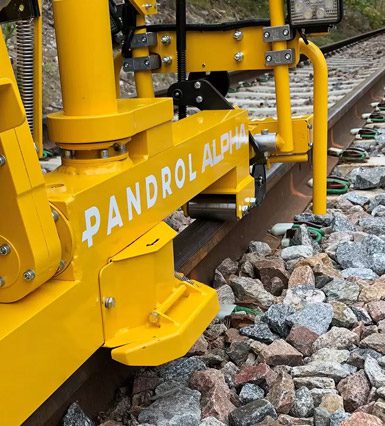Inducted in 2018
The rail grinder is the most effective tool for lengthening the life of rails. Replacing rails is extremely costly; so most railway companies turn to rail grinders to keep their rails usable for a longer period of time.
These grinders extend the life of the rails, spikes and anchors, ties, and ballast. Trains cause a lot of wear on the rails, and if left unchecked, this wear can lead to derailments. This is of greater concern on curves, where the weight of the train wears down the outside rail faster than the inside rail. As the rail becomes more distorted from heavy traffic, derailments become more likely.
The rail grinder works by using grinding stones situated right above the rail. Two types of stones are used: coarse stones to work out the big chips and wear, and a fine stone for a smooth, polished look. A rail grinder will go through several dozen stones in a day.
A rail grinder consists of a lead locomotive, crew quarters, the grinding equipment, and large water containers, which constantly spray water onto the tracks to deal with the sparks and flames produced by grinding the stones against the steel rails.
The major company in rail grinding is LORAM Maintenance of Way, Inc., which has been grinding rails since its inception in 1954. Grinding work is overwhelmingly performed on Class I freight lines, since passenger trains are less demanding on the tracks.


